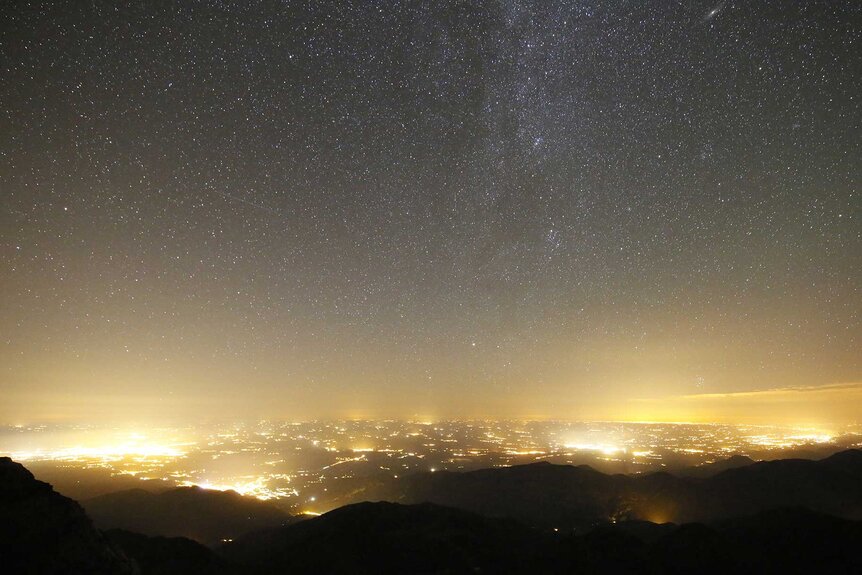Create a free profile to get unlimited access to exclusive videos, sweepstakes, and more!
Will the Stars Really 'Vanish' in 20 Years?
Maybe, sort of.

In H. G. Wells’ classic science fiction novel, The Invisible Man, the protagonist, Griffin, uses a novel chemical cocktail to render himself invisible. In the 2020 film adaptation (now streaming on Peacock!) chemicals are replaced with an advanced optical suit. In either case, making a person invisible is a massive technological feat which must be done with purpose. If only the same were true of the stars.
LIGHT POLLUTION IS ERASING THE STARS
Each of us, by virtue of being born on this planet, should have an unfettered view of the brilliance of our galaxy, the Milky Way, arching across the night sky. Yet, many of us see only a small portion of stars, the rest of them washed out by artificial light pollution. Every time we flip a switch — from streetlights and storefronts to neon signs and headlights — some of that light bleeds into the air like a magnificent nightlight for all of civilization. Astronomers warn that light pollution, if left unchecked, could make most of the stars invisible within the next 20 years.
RELATED: Are You “Lost in Light?”
Light pollution means you can grab a late night burrito when you need one, but it will cost you the stars — and, like, $1.79 probably — because we never really get to true night. Instead, we are trapped in a perpetual twilight limbo that most of the stars can’t pierce.
“The night sky is part of our environment, and it would be a major deprivation if the next generation never got to see it, just as it would be if they never saw a bird’s nest. You don’t need to be an astronomer to care about this. I am not an ornithologist but if there were no songbirds in my garden, I’d feel impoverished,” said Martin Rees, the astronomer royal of the United Kingdom, via The Guardian.
The recent concern surrounding the current and future state of light pollution stems at least in part from a study published January 2023 in the journal Science. Researchers enlisted an army of more than 50,000 citizen scientists from around the world to report the level of light pollution in their area. Rather than attempt to measure the light level directly, participants counted the number of stars they could see in the sky and those numbers were tallied over an 11-year period to see how the totals changed.
The data reveals that between 2011 and 2022 the number of stars visible in the night sky fell by between 7% and 10%, year over year. Seven percent might not seem like a lot, but it stacks up pretty quickly. If you can see 1,000 stars in the night sky today, you would only have 234 two decades from now. Of course, light pollution is a local event, and you can still get to dark skies if you get away from cities, but a significant portion of the world in coming decades may not have access to the stars with anything even approaching what we have today or what we’ve had in decades past.
Fortunately, this is a problem we can solve the same way we created it, by flipping a switch or by making a few moderate changes to the way use artificial lights. Pointing outdoor lights downward and shielding them from above, placing limits on the brightness of outdoor lights, and switching from blue and white light to oranges or reds would allow more of the stars to shine through.
Late night burritos are great, don’t get us wrong, but they aren’t as good as seeing the stars.
If you need more proof that invisible things are no good, catch The Invisible Man, streaming now on Peacock.



























